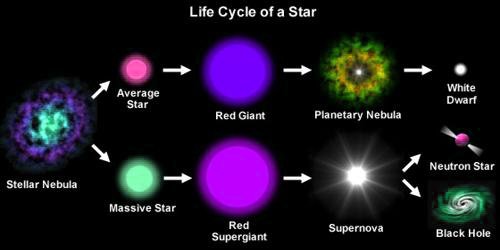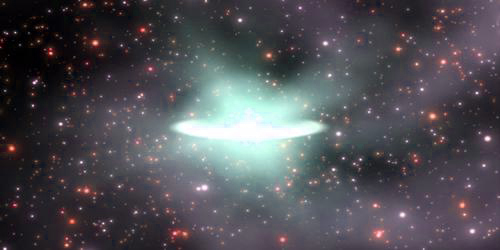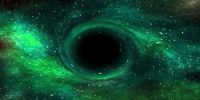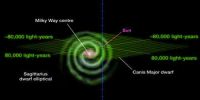Birth of a Star (history of stars)
At night we see innumerable light points twinkling in the clear blue sky. These are called stars. Through naked eyes, we see thousands of stars. Stars are burning boiler composed of gases and dust particles. It is thought that through a giant explosion (called big-bang) this universe was formed. In the earlier stage throughout space cold hydrogen, helium and other gases were distributed all over. It is called a dust cloud. In the dust cloud, there were about 75% hydrogen, 24% helium and 1% of carbon, nitrogen, oxygen, and other gases.
We know atoms are neutral and there is no electrical attraction or repulsion between them. The only force acting between them is the gravitational force. Due to the action of this gravitational force, the dust cloud starts condensing. As the distance between gas atoms starts decreasing, the potential energy between them starts decreasing as well. In order to conserve the total energy, their kinetic energy starts increasing and consequently collision among them increases. As a result, due to the increase of kinetic energy and collision temperature starts increasing. As the dust cloud gets condensed more and more due to the action of gravitational force, more the number of atoms are attracted towards the center. Thus the density and temperature of the nearby space of the nucleus increase rapidly compared to the outer portion of the nucleus. As the temperature increases, the amount of radiant energy from the dust-shell also increases and non-luminous rays of light are emitted from the dust-shell. This process of contraction of the dust cloud continues and the temperature also continues to increase.
When temperature increases to about 107 K. then nuclear fusion starts. In this fusion process, an enormous amount of energy is produced and comes out from the nucleus. Due to this enormous outward pressure is built up. This outward pressure created from radiation opposes the gravitational contraction. When the outward pressure becomes equal to the contracting force of gravitation, then a stable state is reached. In this way, a star becomes matured and stable. Of course, from the randomly distributed gases and dust particles, not a single star is created; hundreds of stars form a cloud of stars. With ages, the size of the cloud of stars also increases and the distance between stars also increases. At one stage they get separated as a single star. It takes millions of years. Our sun possibly has come out from a cloud of stars about 5 billion years ago.

Structure: Scientists believe that by a complex nuclear fusion process 4 hydrogen nuclei transform into a helium nucleus. It is to be noted that, one hydrogen nucleus means the proton of the hydrogen nucleus. Similarly, a helium nucleus means two protons and two neutrons of the helium nucleus). The mass of the helium nucleus formed due to the fusion process is slightly smaller than the combined mass of 4 hydrogen nuclei. That means, in forming helium nucleus a certain mass is lost. According to Einstein’s mass-energy (E = mc2) law, this lost mass is transformed into energy. This energy creates outward pressure. The energy which is released in fusion reaction contains about 95% of γ-rays. These rays undergo several diffractions before reaching to the outer surface and after losing enormous energy due to diffraction finally emit as light from the outer surface. In this process, enough time is spent. The light which we get now from the sun, (for
this light the nuclear fusion took place inside the center of the sun possibly 1 million years back. Helium produced by reaction and helium of the dust helium core cloud combinedly forms the core of the center of the star. Outside this helium core, hydrogen fusion reaction takes place. In the figure, the structure of the sun has been shown.

The radius of the shell which is formed by the helium core and the region of the fusion reaction is about 10% of the radius of the star. How long a star will use hydrogen as fuel depends on the mass of the star. For large masses duration of use will be less. The reason for this is that the gravitational force is large as the mass of the star is more hence more outward pressure is needed for the star to remain in the stable state and to create this large outward pressure more hydrogen is needed as fuel. Formation of helium nucleus by fusion of hydrogen inside the star and emission of light from the star continue for billions of years. It is youth period of a star. This is the primary stage of evolution of a star. Most of the stars in the universe are in this stage. The sun was in this stage for the last 5 billion years and scientists believe that the sun will remain in this stage for the next 6 billion years.
















